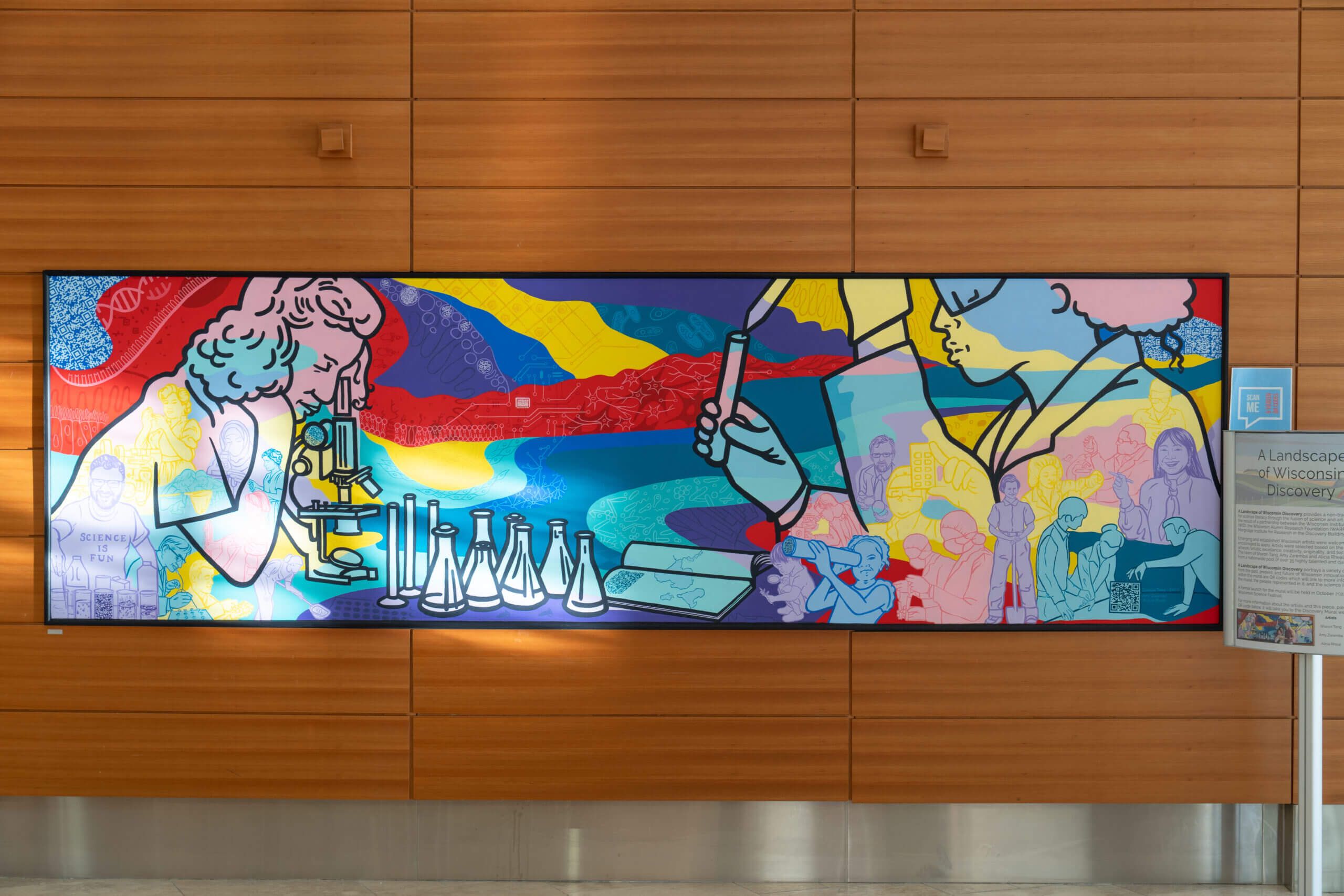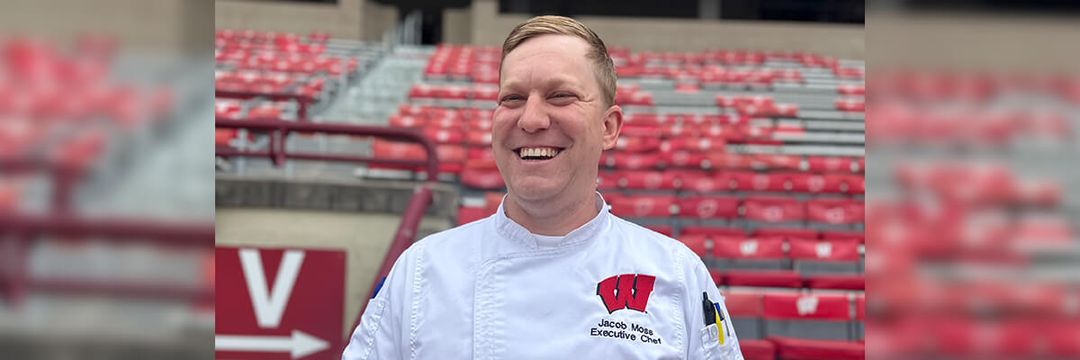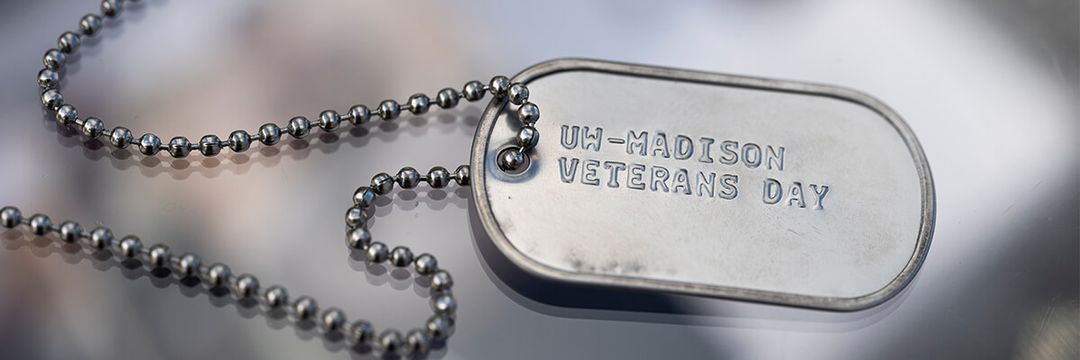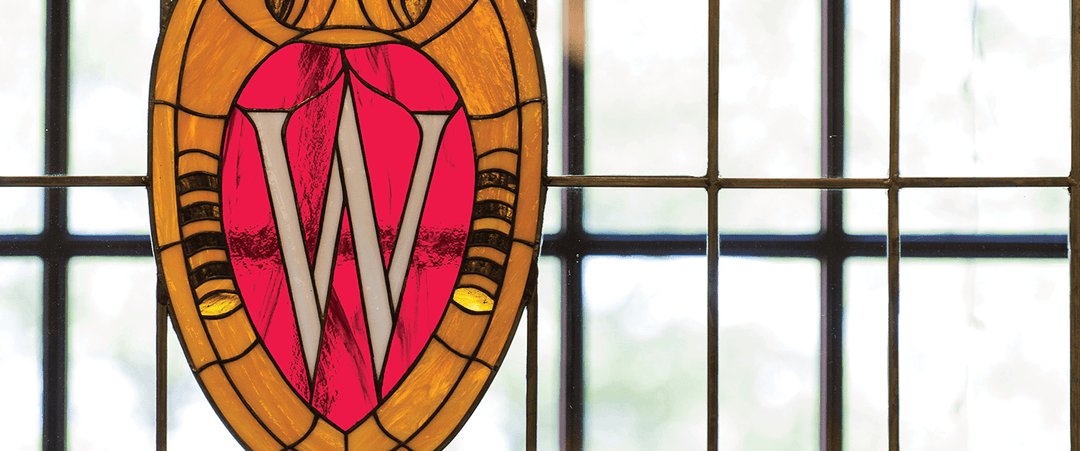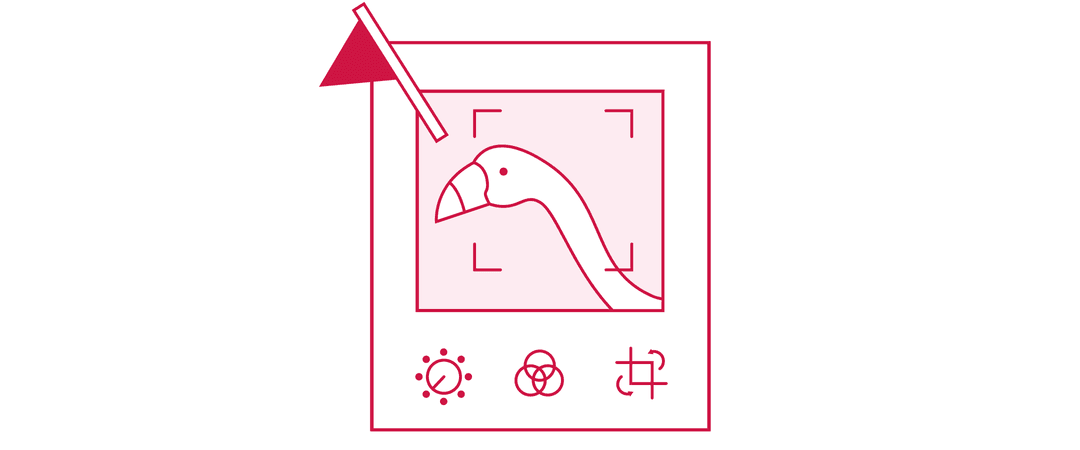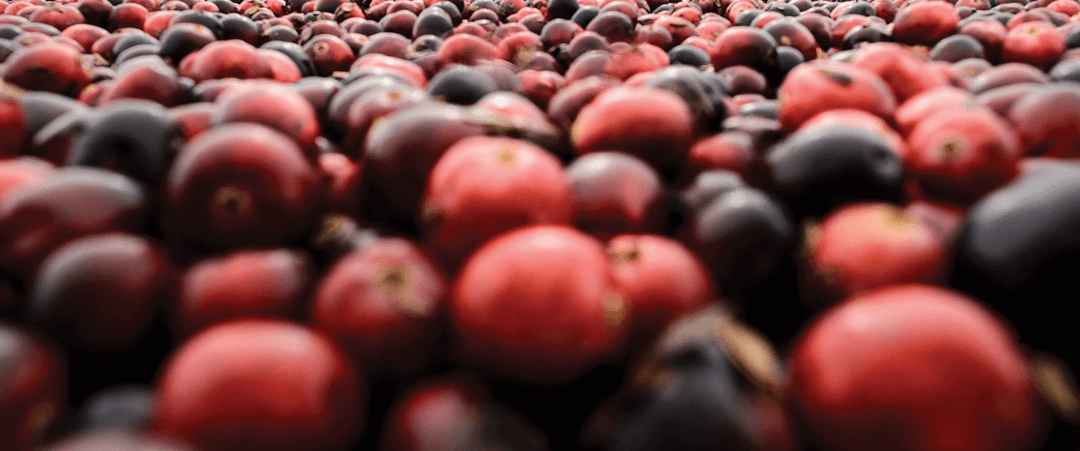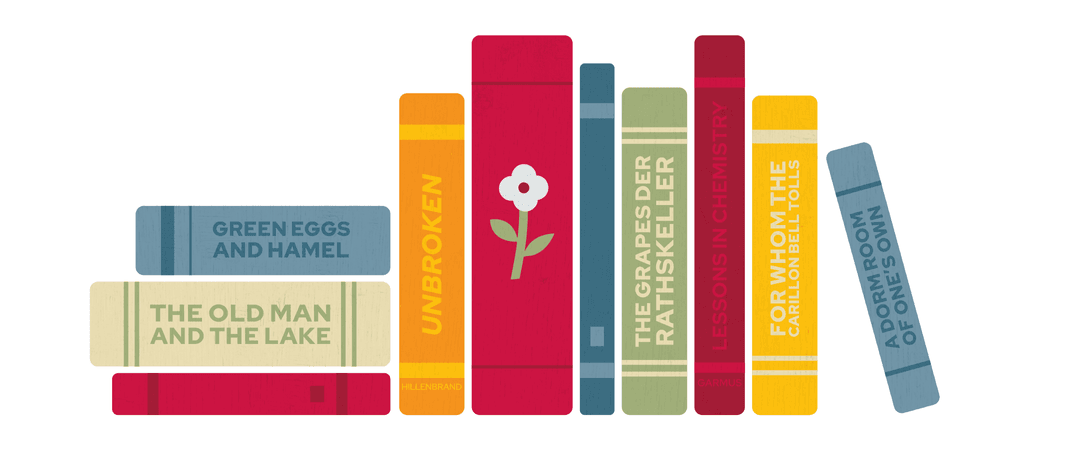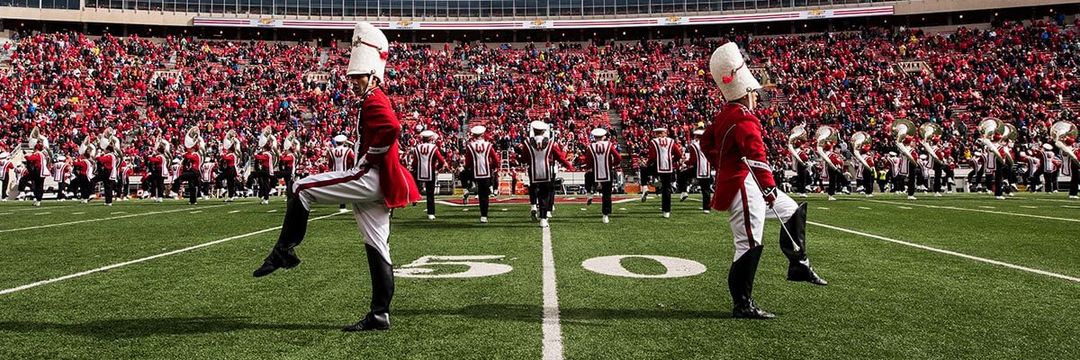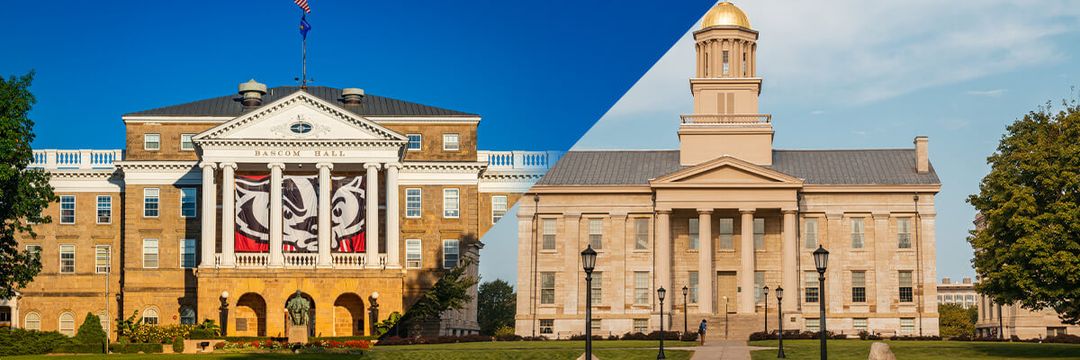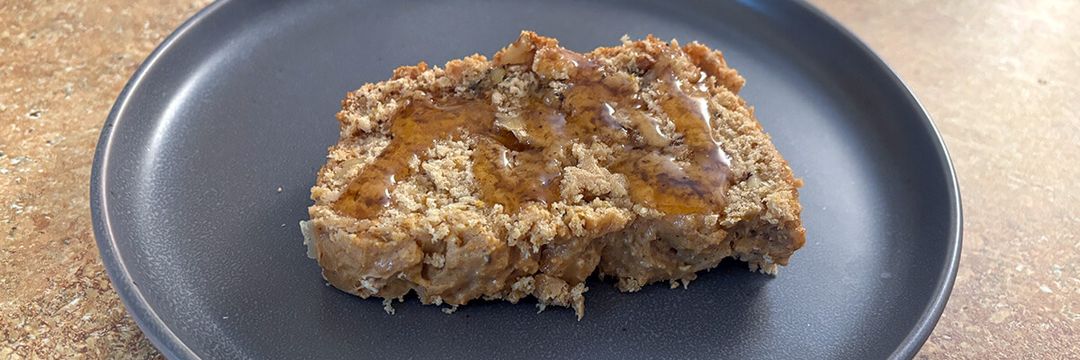The legacy of groundbreaking research at UW–Madison is as rich in discoveries as it is in the variety of individuals who made them. In Landscape of Wisconsin Discovery, a new mural on display in the lobby of the Wisconsin Institute for Discovery (WID), trailblazing UW scientists join anonymous figures that represent those still making names in their fields, and those who never got the chance to make a mark because of barriers that persist in science, technology, engineering, and math (STEM) fields to this day.
The mural is the answer to a public call from the Science to Street Art initiative, a collaboration among WID’s Illuminating Discovery Hub, the Morgridge Institute for Research, and the Wisconsin Alumni Research Foundation. They envisioned a piece that, among its many attributes, would reflect the “past, present, and future” of the diversity of STEM, highlight the innovative work happening at the institutes, and “provide science literacy through the fusion of art and science.”
This pairing of art and science is equally evident in the team that created the mural. Sharon Tang MS’22, PhDx’24’s career has “zigzagged” from an undergraduate degree in studio art and teaching kindergarten to conducting doctoral research on how Staphylococcus aureus toxins affect vascular repair. Amy Zaremba ’05 followed a similarly winding path through an English degree and law school before making a career as a muralist. Along with Madison artist Alicia Rheal, Tang and Zaremba used interactive layers to combine recognizable individuals and scientific imagery with embedded QR codes that engage viewers both visually and intellectually with a piece that captures the nature of infinite discovery — and those who drive it.
Sharon
You studied studio art in undergrad but found your way into STEM through teaching. What was it about teaching that drew you to research?
I enjoyed working with people and communicating with others, and helping others learn helped frame my own desire for wanting to understand our world better. Asking questions is why I veered into research, but there’s a big component for wanting to share the science and learning back to others. As I spend more time in research, I realize that the idea of STEM and communicating science to the broader public is a piece that sometimes becomes an afterthought. However, I find that it’s so important to be able to engage people who don't identify as scientists in these concepts because it truly is something that we all are surrounded by, knowingly or not. To do it in a way using art is really exciting because not only does it really pull in my past experiences, but I think that using art to engage in science can help people access concepts from a different angle. I like the idea of allowing people to explore their relationship to the sciences through art since it can be more approachable, and it makes science less intimidating.
It sounds like mural-making is the perfect blend of your areas of interest and expertise.
The more I started working with mural-making, the more I really felt this synthesis [of] changing the spaces around us physically and the spaces that are within us. For me, it helped me bridge the idea that a lot of the spaces in science might not feel so welcoming to people who don’t have the background experience or who don’t have the access to science knowledge or training or exposure to people who are in the sciences. And while I’m using art to change physical spaces, I’m also exploring the notion of public art broadening the access to our science spaces. I honestly think that the most interesting part about creating pieces like this is that it is really meant for the community. When people are able to interact with a piece, it allows them to bring pieces of themselves into it as they experience it and build an understanding on their terms.
As an artist and a scientist, do you find more similarity or difference between these fields?
I think that conversations people have about art and science make it seem like they’re so different, but really, I like to think that it’s just different sides to how we make sense of the world, whether it be how we start to understand the truths of the world through the sciences or the truth of our experience in our humanity through arts. I like to think that they both contribute something.
How does being both an artist and a scientist inform your view of the world?
I think that science informed my art process long before I knew to call it science, and vice versa. With artmaking, I think the methodical process of observing, analyzing, and changing courses happens often in a visual arena, and experimenting by trying different approaches is in the very nature of being a creative. Meanwhile, having a personal connection with art for so long has given me the courage and freedom to think of my scientific research via different angles. I think it often takes a certain amount of courage to embrace being uncomfortable or uncertain, and having the practice of “visually playing” offers an anchor for considering complicated questions, concepts, and ideas in science through different lenses. So, to me, art and science are like two sides to the same coin of exploration and learning.
You are credited with bringing your team to this project. What drew you to it?
Unfortunately, I’ve had damaging experiences previously where I did not feel welcome in a laboratory setting, so the idea of creating something in an academic space that invites the public in was very important to me. While it was exciting to celebrate the variety of Wisconsin science and scientists in a mural, it was particularly meaningful to create an art piece that speaks of belonging in the sciences. As a muralist, I see firsthand the profound impact that shared art can have on changing a space not only physically, but also in the way that it can bring people together. The exciting part was to be able to highlight that in a building that represents the best of science and art and fostering interdisciplinary collaborations.
The WID mural seems to highlight the importance of teams in both art and science.
Between both the art and the sciences — especially the art side of creating murals and having a really big project — [the key] is finding the right teams. In both art and science, having really great teams is what keeps things fun and exciting to pursue some of these really hard projects and hard questions. Amy and Alicia are really a big part of the reason why I’ve started being able to take the art side more seriously as something that I work in tandem with science. The people matter.
Amy
What is it about the collaborative, large-scale nature of mural-making that you really enjoy, especially having come from a small-scale, individual practice?
There’s something really exciting about working with both community and with other artists. It’s a difficult challenge, in both of them. Working with other artists and collaborating, like I did on the WID mural, is difficult in that, for a lot of artists, [art is] a very personal thing; it’s very independent and isolating, sometimes. But to be able to spin those ideas off of each other and see where it goes is always better than I would’ve been alone. Even in my own work, I’m always trying to reach out to other artists, to get their opinion, get that kind of feedback loop that you kind of get a little bit in art school, hopefully, but you usually lose as you get into your own practice. I think collaboration makes that really exciting again. Community stuff is a whole other level. Sometimes, like the WID one, it [involves] a lot of inspiration and community involvement. It was talking to scientists and other folks about what they wanted to see, and that’s my favorite part: talking to people about what excites them or what they envision for a project, or, if they’re not quite sure [what they envision], to be able to take those threads and turn it into something that they see and they’re like, “Yeah, that’s it.” That’s the best feeling.
How has public art brought you into conversation not only with other artists, but also with other areas or fields with which you may not have otherwise interacted in your individual practice?
The WID mural was incredibly interesting because we had the privilege of sitting down with scientists who were excited to explain their research and contributions to us — not to us as a general audience, but to us as specific artists. That interaction was unique and exciting. I recently finished a project for a free medical clinic in Janesville. I got to meet and work with the staff as I learned about trauma-informed design while creating a full-building mural to welcome and celebrate the patients of the clinic. This experience changed the way I think about many design elements. I’ve designed and painted with youth in alternative school programming. These are kids that I wasn’t sure how to find common ground with, but we did, and they helped me see just how powerful the practice of art can be in opening dialogues as well as improving academic and social outcomes. I’ve also been honored to work with young people who have suffered the tragic loss of classmates. Helping kids find joy and spread hope while dealing with that kind of trauma has been humbling and beautiful. Each project presents a new opportunity to learn from someone new and a challenge to understand where they are coming from and what vision they want to share.
How has this influenced your artistic practice or worldview?
The artwork that resulted from these experiences could only come from the interaction. I never would have designed them on my own, but I am in them all. I think that this practice of not just public art but community art has given me a lot of hope for the goodness in people and confidence in the importance of art in our society. I know that access to art and artmaking is vital to a thriving community. It doesn’t just belong in museums or private schools but everywhere. Every mural experience that I have had reinforces this knowledge.
How is the WID mural, a canvas transferred from the studio to its final location, different from others you’ve done?
It honestly felt more like a fine-art piece than a mural. The process of being able to paint it in the studio the way that we did, and all the layers and levels and attention to detail we were able to have with this one, it felt very different than a lot of the projects we worked on — in exciting ways and in challenging ways, too. A lot of stuff we do is a little more gentle: birds and animals in the neighborhood. It’s not scientists who are very attached to their work. That type of community was different to work with, and it was great.
What else did you have to take into consideration besides the content outlined in the commission when creating this piece?
Sometimes [artwork] is only far away or only driven past. [With] this, people see it from a distance, and [then] they get to put their nose right up to it. Having that [QR code] interaction was a neat thing to be able to do, too. [WID has] a lot of tours and new students coming through there that are going to stop in front of that mural and talk, and then people that work there are seeing it every day, so hopefully, there’s something that you can see that you didn’t notice before. That space allowed us to do that. That was something that we had to think about from the beginning — how [we were] going to keep it interesting.
How does this piece speak to you?
My strongest connection to the mural is in the possibilities that it represents. The historical figures and current scientists represented make me proud to be a UW graduate, but I resonate more with the anonymous figures. I have a young daughter who can grow up to study space, or limnology, or cellular biology. She is represented in this mural and that, to me, is beautiful and hopeful. I love that anyone else can feel that same way. It’s about the future and the now, not just the heroes of the past.
